Create a Garden That Tells a Story
http://decor-ideas.org 07/02/2014 03:13 Decor Ideas
An exceptional garden tells a story. The story can reflect the personality of its creator or tell about the land from which the garden emanates. A bubbling brook, birds chirping or wind rustling through a stand of ornamental grass begins to tell the verbal story, but there is also a written story inextricably woven through the layout of garden paths, art and the plant palette that is not to be ignored.
Dare to imagine your garden in narrative form. Viewing it this way will help you create interest and order through punctuation. Without order even the areas of an informal garden tend to run together like sentences in a novel without punctuation marks. Let’s look at how to make better sense of your space through the addition of punctuation.
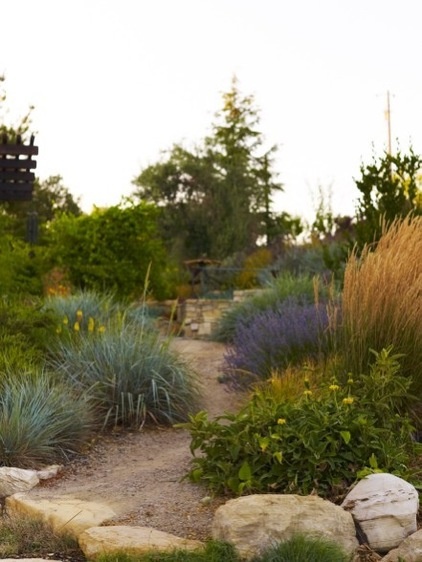
The Comma
Grammatically speaking, a comma is a pause between parts of a sentence. A well-designed garden provides short pauses to allow the visitor to relax and appreciate a progressive journey, then resume it. Additionally, this concept can be applied to gardens through the form of rhythm. We all have internal rhythm, manifested through our heartbeats and even that song that continually plays in our heads. Rhythm involves an ebb and flow, a beginning and an end, with short pauses in between.
Notice how the mounded plants in the garden shown here act as commas, both establishing a rhythm and furnishing short pauses throughout the garden journey.
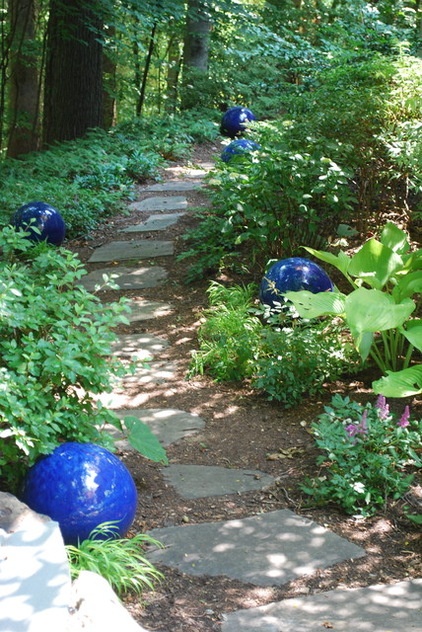
The comma concept can also be executed in a garden through multiple sculptural elements. Notice how these ceramic spheres both pull the eye down the pathway and establish rhythm through ebb and flow.
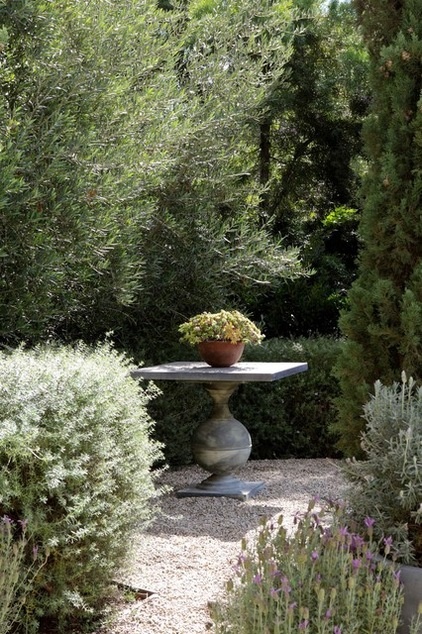
Parentheses
A remark in parentheses is inserted as an explanation or an afterthought into a passage that is grammatically complete without it. Small garden vignettes off a central axis or pathway could be considered parenthetical in the overall journey through the space. These vignettes may have little to do with the essential garden story but may enrich it.
One of my fond memories of the San Diego Zoo involves the hummingbird aviary. It was off the beaten path, and few went there. It was a parenthesis, a respite from the day’s pace. We all need to visit the parenthetical; it soothes the soul.
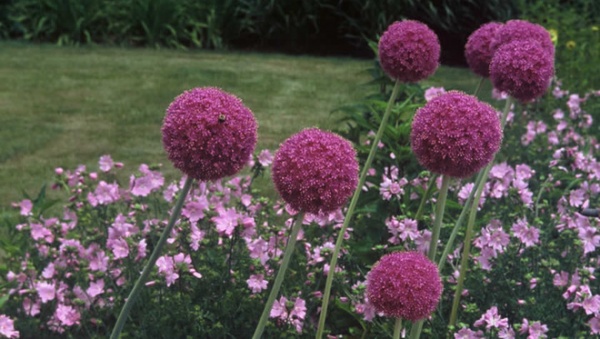
The Exclamation Point
This punctuation mark is used to show a forceful way of speaking or a strong feeling. The best gardens evoke strong emotions, so why not punctuate your garden to boldly draw attention to its strong points? Choosing bold colors for upright bulbs and perennials or columnar shrubs would do just that.
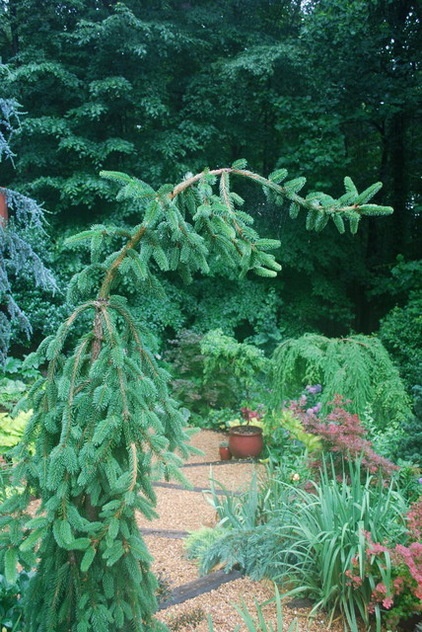
The Question Mark
A question mark expresses uncertainty. We have all viewed gardens that are so predictable that they flirt with boredom. Dare to mix things up in your garden to keep your friends guessing. Everyone knows that trees grow vertically, so why not plant a weeping tree for a bit of whimsy?
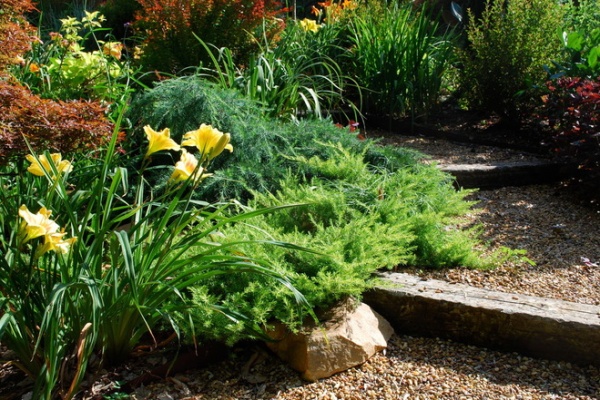
The Semicolon
This punctuation mark is used to separate major elements of a sentence by degrees when more than a comma is needed. Perhaps your garden needs more than a small pause to join sections in a cohesive manner.
This turn in a pathway in my own garden resembled an elbow and needed softening in order to join two sections of the bed in a cohesive way. The solution was to plant several chartreuse shore junipers (Juniperus conferta ‘All Gold’, zones 6 to 9) along with a Feelin’ Blue deodar cedar (Cedrus deodara ‘Feelin’ Blue’, USDA zones 7 to 9). The billowy textures of each plant complement one another while softening the bend.
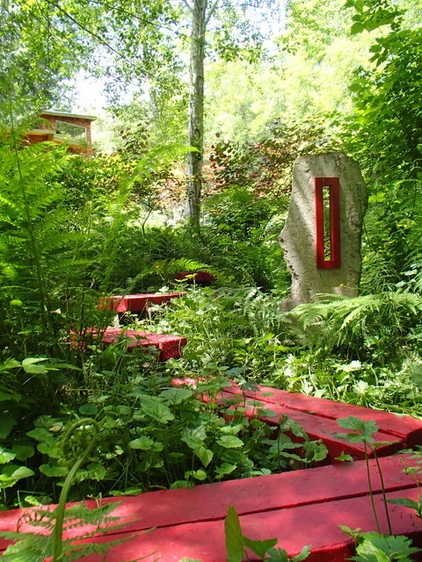
Sculpture can also act as punctuation in this way. In this garden the art both draws attention to the bend and brings continuity to the theme by repeating the color of the boardwalk.
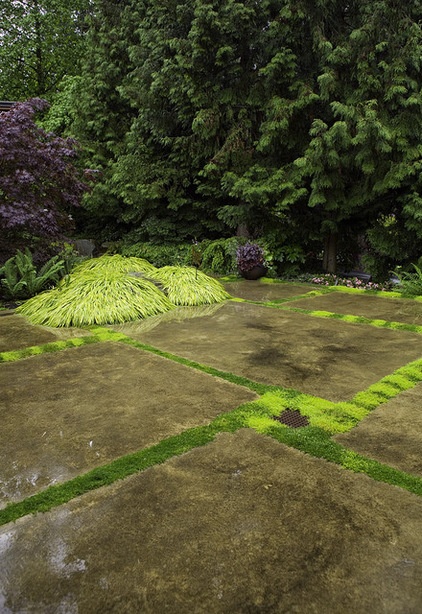
The Period
This punctuation mark indicates completion of a thought, perhaps leaving room for another thought to begin. The Japanese forest grass (Hakonechloa macra, zones 4 to 9) provides the perfect end to a section of this garden. Perhaps another garden chapter begins just out of view.
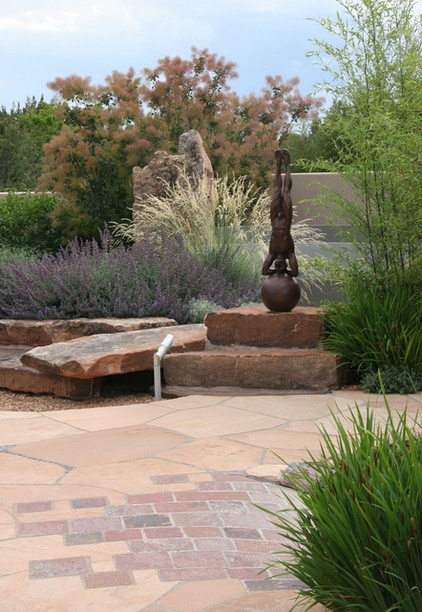
Sculpture can also act as a period in a garden. This piece serves as a focal point at the end of a path.
Treating your garden as a written narrative can inject new life and meaning into it. Period.
Related Articles Recommended












